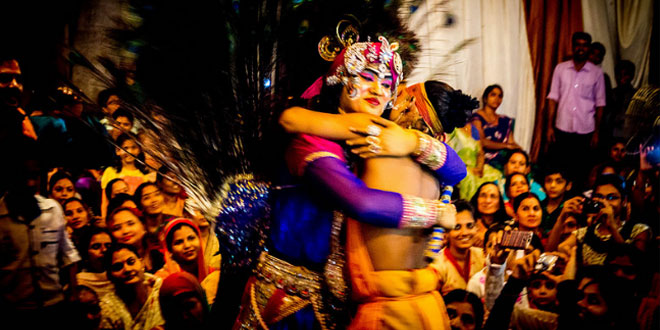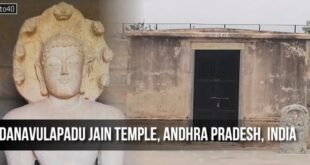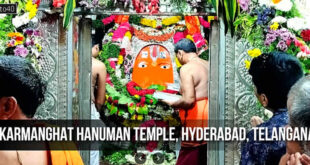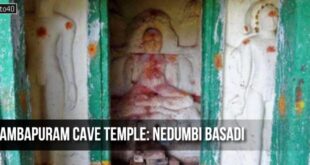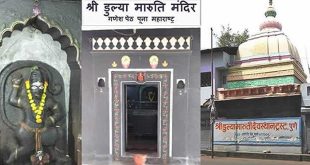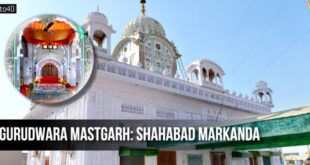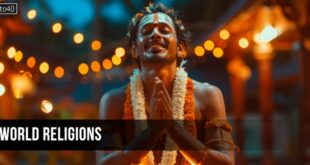Sacred India
India is a land of religions, saints, rivers and holy places. There is probably more diversity of religion and sects in India then anywhere else on the earth. Apart from having nearly all the world’s greatest religions represented, India was the birthplace of Hinduism and Buddhism, vital supporters of Zoroastrianism (one of the world’s oldest religions) and home to Jainism (an ancient religion unique to India).
Hinduism
India’s major religion, Hinduism, is practiced by approximately 80% of the population i.e. over 670 million people. It is the largest religion in Asia. It is one of the oldest extant religions, with firm roots extending back to beyond 1000 BC.
The Indus Valley Civilization developed a religion, which bore a close relationship to Hinduism. Later, this religion influenced by the combined religious practices of the southern Dravidians and the Aryan invaders who arrived in the north India around 1500 BC. Around 1500 BC, the Vedic scriptures were introduced, providing the first loose framework for the religion.
Holy Books
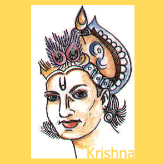 Hinduism today has number of holy books, the most important being the four VEDAS (divine knowledge) which are the foundation of Hindu philosophy. The Upanishads are contained within the Vedas and delve into the metaphysical nature of the universe and soul. The Mahabharata (Great wars of the Bharatas) in an epic poem containing over 220,000 lines. It describes the battle between the Kauravas and Pandavas, who were descendants of Lunar race. It also includes the story of Rama and the most famous Hindu epic, the Ramayana. The Bhagavad Gita is a famous episode of the Mahabharata where Krishna relates his philosophies to Arjuna.
Hinduism today has number of holy books, the most important being the four VEDAS (divine knowledge) which are the foundation of Hindu philosophy. The Upanishads are contained within the Vedas and delve into the metaphysical nature of the universe and soul. The Mahabharata (Great wars of the Bharatas) in an epic poem containing over 220,000 lines. It describes the battle between the Kauravas and Pandavas, who were descendants of Lunar race. It also includes the story of Rama and the most famous Hindu epic, the Ramayana. The Bhagavad Gita is a famous episode of the Mahabharata where Krishna relates his philosophies to Arjuna.
Facts & Fallacies
Basically the religion postulates that we will go through a serious of rebirths or reincarnations that eventually lead to moksha, the spiritual salvation which frees us all from the circle of life and death. With each rebirth we move close to or further from eventual moksha; the deciding factor is our Karma, which is literally a law of cause and effect. Bad actions during our lives result in bad karma, which ends in lower reincarnation. Conversely, if our deeds and actions have been good, we will reincarnate on higher level and be a step closer to eventual freedom from rebirth.
Dharam (Natural Law)
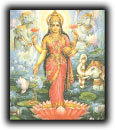 Dharma, or the natural law, defines the total social, ethical and spiritual harmony of our lives. There are three categories of dharma, the first being the eternal harmony which involves the whole universe. The second category is the dharma that controls castes and the relations between castes. The third dharma is the moral code, which an individual should follow.
Dharma, or the natural law, defines the total social, ethical and spiritual harmony of our lives. There are three categories of dharma, the first being the eternal harmony which involves the whole universe. The second category is the dharma that controls castes and the relations between castes. The third dharma is the moral code, which an individual should follow.
The Hindu religion has three basic practices. They are puja or worship, the crimination of the dead, and the rules and regulations of the caste system. Hinduism is not a proselytizing religion since you cannot be converted. You’re either born a Hindu or you are not; you cannot be converted. Nevertheless, Hinduism has attracted many westerners, and India’s ‘export gurus’ are many and successful.
A guru is not so much a teacher as a spiritual guide is someone who by example or simply by his or her presence indicates what path you should follow. In spiritual search one always needs a guru.
Hindu Gods & Goddesses (Devi and Devta)
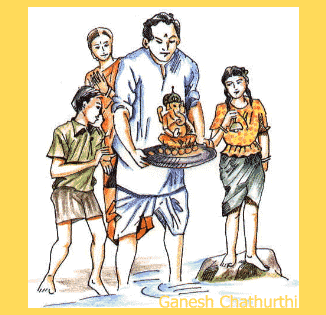 Westerners find it difficult to understand Hinduism principally because of its vast pantheon of Gods – traditionally there are 330 million Hindu Gods and Demons. In fact you can look upon all these different gods simply as manifestations of Brahman or Godhead. This one omnipresent god has three main physical representations. Brahma is the creator, is considered to be impersonal and infinite, unable to be comprehended through senses. Brahma is usually represented as having four bearded head and arms, which hold a scepter, a drinking bowl, a bow and the Vedas, which emanated from his mouths. His vehicle is a white swan or goose. His knowable consort is Saraswati, goddess of science, speech and music and the inventor of Sanskrit. She carries a stringed instrument called Veena.
Westerners find it difficult to understand Hinduism principally because of its vast pantheon of Gods – traditionally there are 330 million Hindu Gods and Demons. In fact you can look upon all these different gods simply as manifestations of Brahman or Godhead. This one omnipresent god has three main physical representations. Brahma is the creator, is considered to be impersonal and infinite, unable to be comprehended through senses. Brahma is usually represented as having four bearded head and arms, which hold a scepter, a drinking bowl, a bow and the Vedas, which emanated from his mouths. His vehicle is a white swan or goose. His knowable consort is Saraswati, goddess of science, speech and music and the inventor of Sanskrit. She carries a stringed instrument called Veena.
Vishnu is the preserver or sustainer is associated with right action. He behaves as a lawful, devout Hindu, and protects and sustains all that is good in the world. He sits on a couch made from the coil of a serpent and in his hands he holds two symbols, the conch shell and the discus. His vehicle is half – man half – eagle known as Garuda. The Garuda is benevolent and has a deep dislike of snakes. Vishnu’s consort is Lakshmi (laxmi) the goddess of wealth, prosperity, honor and love. She is often represented sitting on the lotus flower. It is said she came from sea. Vishnu has had nine reincarnation, including Rama, Krishna and Gautam Buddha and it is said that he will come again.
Shiva (Siva) the destroyer and reproducer, is the agent of death and destruction, without which growth and rebirth could not take place. He is either represented with one or five faces and four arms, which hold, fire, a drum, a horn or trident, or take the position of protection or action. He is often surrounded with arch of flame, sometimes has third eye. His matted hair is said to carry Ganges, the goddess of the river Ganges, in it. He is show with a serpent around his neck. One of Shiva’s (Siva’s) reincarnations is Nataraj, the cosmic dancer, whose dance shook the cosmos and created the world. Shiva’s (Siva’s) consort is Parvati, the beautiful daughter of Himalayas and is considered to the perfect wife. She is a form of the mother goddess Devi, whose body is India and who appears as Durga, the terrible (who holds weapons in her 10 hands, rides a tiger and slays the demons of ignorance) and Kali, the fiercest of the gods (who demands sacrifices and wears a garland of skulls).
Shiva (Siva) and Parvati have two children. Ganesh is the elephant-headed god of prosperity and wisdom and is the most popular of all gods. His vehicle is a rat. Shiva (Siva) and Parvati’s second son is Kartikkaya or Skanda, the god of war, whose vehicle is peacock.
Saints & Sadhus
A sadhu is an individual on a spiritual search. They’re easily recognized with their clothes usually saffron in color. Sadhus have often decided that their business and family life have reached a natural conclusion and that it is time to throw everything temporal aside. Sadhus renounce their material lives and wander the country, homeless, on a personal spiritual quest.
Holy Places
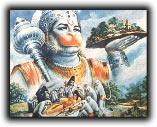 Of India’s many sacred cities, seven are considered particularly holy Varanasi, Haridwar, Ayodhya, Mathura, Dwarka, Kanchipuram and Ujjain are known as Tirthas – fords that enables pilgrims to cross from the world of earthy suffering to a divine plane.
Of India’s many sacred cities, seven are considered particularly holy Varanasi, Haridwar, Ayodhya, Mathura, Dwarka, Kanchipuram and Ujjain are known as Tirthas – fords that enables pilgrims to cross from the world of earthy suffering to a divine plane.
Varanasi and Haridwar are important sites on the river of life, Ganges. Other cities are the birthplaces of gods – Rama was born in Ayodhya, Krishna in Mathura. Badrinath, Puri, Rameswaram and Dwarka are traditionally considered the corners (north, south, east and west) of mother India. Pilgrims attempt to make a journey, which visits all four.
 Kids Portal For Parents India Kids Network
Kids Portal For Parents India Kids Network
